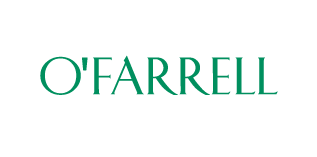Following the approval of a tokenization regime through General Resolution 1069/2025, the CNV broadened the framework on August 20, 2025, by issuing General Resolution No. 1081, which extends its scope of tokenization.
While the original regime focused primarily on the digital representation of so-called “real world assets,” the new resolution inaugurates a second stage by incorporating marketable securities into the tokenization framework. With this step, Argentina moves towards a comprehensive regulatory structure for the digital representation of financial instruments, positioning tokenization not only as a vehicle for alternative assets but also as a legally recognized mechanism applicable to shares, debt instruments and other securities admitted to public offering.
Authorized Depositaries
One of the central features of the tokenization regime is the appointment of Virtual Asset Service Providers (“Proveedores de Servicios de Activos Virtuales” or “VASPs”) as eligible depositaries for digitally represented securities. General Resolution 1081/2025 now clarifies that only VASPs that are entities duly registered in all categories of the CNV’s Registry of VASPs, may now act as depositaries for the securities to be tokenized. The resolution requires such registration to be simultaneous and effective throughout the entire period during which the relevant securities remain digitally represented.
Custody Obligations
The CNV has introduced obligations on intervening VASPs with respect to the custody of the securities represented digitally. These obligations apply both to those securities that have not been effectively placed in the market and, more importantly, to securities that are blocked in accordance with contractual restrictions or regulatory requirements. The custody arrangements must guarantee a level of security equivalent to that applicable to traditional custody, ensuring that neither employees of the VASP nor external agents may gain unauthorized access to the instruments. The operational details of such custody mechanisms must be reflected in the VASPs’ operational manuals, rules of procedure of their digital platforms, and, as applicable, the terms and conditions of their mobile applications.
Eligible and Excluded Instruments
The resolution broadened the scope of assets eligible for tokenization. In this second stage, the regime now expressly covers shares—whether single-listed or dual-listed—together with negotiable obligations and CEDEARs. In addition, the resolution extends the underlying assets of closed-end mutual fund units and financial trusts whose assets can be composed of real-world assets or other admissible goods, to securities issued by private entities, irrespective of whether such entities have obtained public offering authorization, as well as securities issued by public entities referred to in Article 83 of Law No. 26,831.
Notwithstanding the above, the CNV has drawn certain boundaries. The tokenization of securities characterized as Social, Green, Sustainable or Sustainability-Linked instruments (SVS/VS) is excluded, as is the tokenization of securities issued under automatic authorization regimes, save for those falling within the regime for frequent issuers established under the CNV Rules. Likewise, foreign sovereign debt securities are excluded, with the sole exception of sovereign securities issued by MERCOSUR member states and by the Republic of Chile. These excluded securities may neither be tokenized directly nor be incorporated as underlying assets in financial trusts or investment funds admitted to the regime.
Public Debt and Regulatory Sandbox
The resolution establishes a special treatment for securities issued by the Argentine State, the provinces, the Autonomous City of Buenos Aires, municipalities, autonomous agencies, and multilateral credit organizations of which Argentina is a member. Such securities are exempt from the obligation to seek prior authorization for their digital representation before the CNV. At the same time, the entire regime remains within the framework of a controlled regulatory environment, operating as a regulatory “sandbox”, and the new resolution extends it until August 21, 2026. During this period, the CNV will monitor and evaluate the functioning of tokenized securities in practice. After the expiration of this term, no additional issuances of digitally represented securities will be permitted unless the CNV decides to extend or modify the scheme.
Continuity of the Existing Tokenization Regime
Except as modified by the provisions described above, the remainder of the tokenization framework enacted under General Resolution No. 1069/2025 remains unchanged. Thus, the process continues to require that the securities be issued initially in book-entry or certificate form and deposited with a Central Depository Agent for Negotiable Securities through an authorized depositary. The registered owner of such securities, which may be a VASP or an authorized custodian, holds title to the deposited instruments, which are segregated from its own assets both in transactional registries and in accounting records.
The issuance document of each security must continue to include a specific section describing the characteristics of its digital representation and the intervening VASPs responsible for the placement. The rights of token holders remain limited to economic entitlements—such as interest, amortization and dividends—while governance and voting rights are exercised by the registered owner. Furthermore, VASPs must implement consultation mechanisms enabling token holders to be consulted prior to the exercise of such governance rights. Token holders may, however, request redemption of their tokens, and all transactions conducted on digital platforms duly registered as VASPs are deemed to constitute authorized public offerings under Argentine law, preserving the tax and regulatory benefits associated with the underlying securities.
Market participants —especially VASPs— will need to closely examine the new provisions and align their operational, custody and disclosure frameworks with the requirements of this expanded regime, which will remain subject to regulatory testing and oversight until August 2026.


